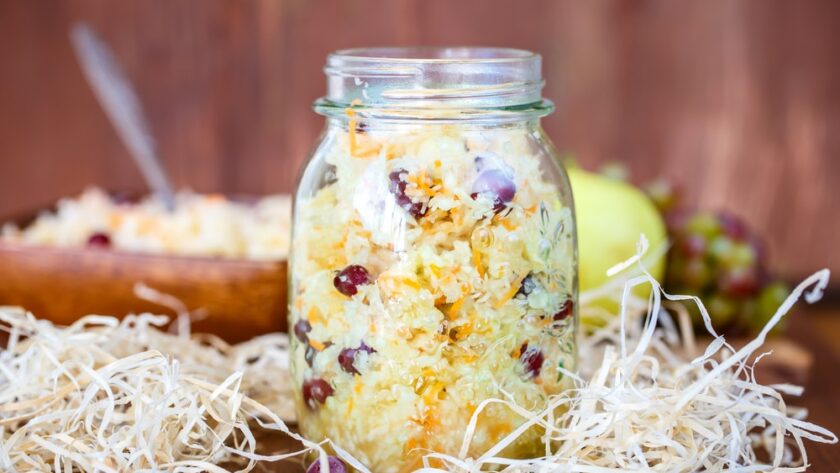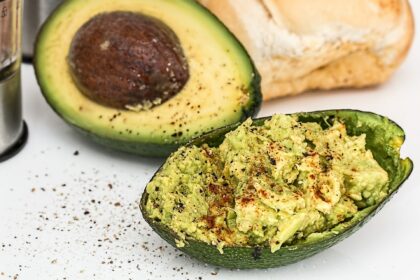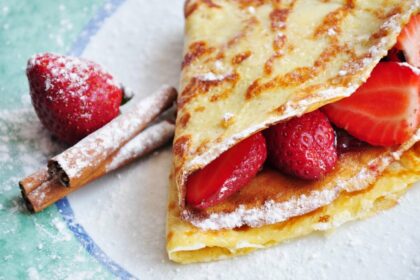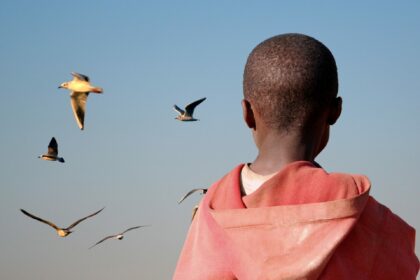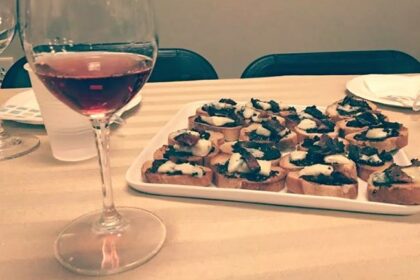
Fermenting isn’t just something you do to make beer. In fact, fermentation involves the transformation of everyday staples such as dairy, bread and vegetables into healthier, more flavorful foods. This process is a deep passion of Branden Byers, host of FermUp, a blog and weekly podcast on all things involving fermentation. Most recently, he’s written a cookbook called “The Everyday Fermentation Handbook: A Real-Life Guide to Fermenting Food–Without Losing Your Mind or Your Microbes” containing 150 recipes and techniques to show people how to ferment just about everything – from fruits and vegetables to condiments and juices.
Epicure & Culture caught up with Byers to learn more about fermentation, and exactly how everyday people can use it to eat their way to a more nutritious life.
Byers got into fermentation about nine years ago, through reading the book “Wild Fermentation: The Flavor, Nutrition, and Craft of Live-Culture Foods” by Sandor Ellix Katz, an expert on the subject. The text got him yearning to make his own yogurt, which, when he tried it realized it was actually really simple to make. And so he moved on to sourdough bread before tackling the hefty project of concocting kvass, a Russian beverage made with stale bread. Today, the fermentation exploration continues.
What Is Fermentation?
Broadly speaking, Byers defines fermentation as the microbial transformation of foods and beverages. It takes on many forms. Let’s use sourdough bread as an example. Yeast and bacteria ferment flour. Bacteria also creates lactic acid, which adds flavor, while carbon dioxide–which produced the yeast–leavens the bread.
It’s the same story with koji, a mold included in recipes for miso soup. It breaks down carbohydrates into sugars that can then be used by bacteria in the process of fermenting miso.
Traditionally, fermentation was a form of preservation. In modern time, we can still use fermentation as a form of preservation; however, now thanks in part to refrigerators and freezers, more people can prepare and enjoy fermented foods right in their kitchens.
Why Fermentation?
So why should foodies try fermentation themselves? Not only does it increase food quality, but, as Byers put it, “The act of making it puts someone a little more in charge of their diet and what they choose to consume.”
Fermentation also gives people the ability to discover flavors that might not be available commercially. Or, by home cooks preparing a common dish involving fermentation like sauerkraut, their end results might bring about in a different taste.
Additionally, it can change opinions toward certain tastes and smells. Gradually being more exposed to fermented foods, eaters often realize what once may have seemed repulsive –perhaps like a Korean delicacy called fermented skate –might become more appetizing.
Byers explains, “Some people don’t like the smell of kimchi but [rather] the taste of it. ”

Getting Hands On With Fermentation
Wish to get more hands on with fermentation? Byers has some ideas for potential sources.
1) Meetup groups: Various groups can often be found in major cities such as New York, Denver and Austin.
2) Facebook groups: With a quick search, find various public and private groups based on your location and interests such as with home brewing, dairy or vegetables or for overall support.
3) Online forums: Wild Fermentation hosts a forum for participating in digital dialogues with questions, concerns or story exchanges.
4) Festivals, public workshops and events: Even further, fermentation festivals are held across the country in locations like Santa Barbara, California, Portland, Oregon and Wisconsin.
“Most importantly, just give it a try,” Byers adds.
Fermentation, From Past To Present
While fermentation has become a hot culinary topic, it’s been around pretty much since human history began. The origins of fermentation came from necessity as humans had to preserve their food as a method of survival. As agriculture became mainstream in society, the need to successfully preserve crops was still vital.
“Fermentation [became] a great way to not only store foods like cabbage to last from fall to winter, but also [kept] their nutrients viable,” said Byers.
Though people may claim fermented foods can overall improve your health, Byers offers one absolute benefit. Research implies that microbes–a key component–make certain nutrients more bioavailable. Basically, microbes break down them that otherwise people can’t absorb or not as efficiently. Essentially, it works as a pre-digestive.
Practicing the art of fermentation is also a patient one. With his cookbook, Byers lists beginner and advanced recipes that involve different time periods – as certain foods that go through fermentation may need to be processed a certain amount of weeks or even months – but also includes tips on how to incorporate fermented foods into everyday life. Consider it as a DIY project!

Fermentation Recipe: Spicy Dill Carrots
Via Branden Byers
Yield: 1 Quart
Prep: 10 Minutes
Fermentation: 2-4 Weeks
Salt: 5% Brine
Some of the sweetness remains in these carrots after fermentation and this pairs well with the overall sour and spicy flavors. Makes an excellent snack, side dish, or ingredient.
Ingredients:
5 large carrots, sliced in quarters
2 sprigs fresh dill
2 cloves garlic, sliced
5 grams (1/2 tablespoon) red pepper flakes
750 grams (3 cups) water
38 grams (2 tablespoons) salt
Instructions:
1) Pack carrots, dill, garlic and red pepper flakes into a quart-size jar.
2) Mix salt-water brine in a separate jar or bowl.
3) Fill jar with salt brine until all carrots are submerged. Prepare more brine if necessary.
4) Weigh down the carrots so that they remain below the brine.
5) Close lid on jar and leave to ferment, away from direct sunlight, for 2-4 weeks.
6) Make certain to release any CO2 buildup in the first week by quickly opening and closing the lid.
7) When fermentation is to your liking, move to long-term storage (i.e., refrigerator, basement, root cellar).
Enjoy!
Have you tried fermentation in your own home? Please share your experience in the comments below.
-By Michele Herrmann
Also Check Out:
One’s Destination Is Never A Place Inspirational Travel Quote [Art Print]
Top 10 Yoga Adventures For Thrill Seekers Around The World
Journey Inward: The Best Silent Retreats Around The World
Latest posts by Michele Herrmann (see all)
- 15 Unique Gifts That Give Back To Charity - Jan 21, 2024
- Foodie Fun: 12 Delicious Made In America Gift Ideas - Nov 17, 2019
- How Deidre Mathis Made Her Dream Of Starting A Hostel Business A Reality - Jan 31, 2019
- Where To See NYC’s Best Street Dancing (While Giving Back) - Oct 4, 2017
- 6 Creative & Curative Tea Shops In Portland, Oregon - Aug 28, 2017

